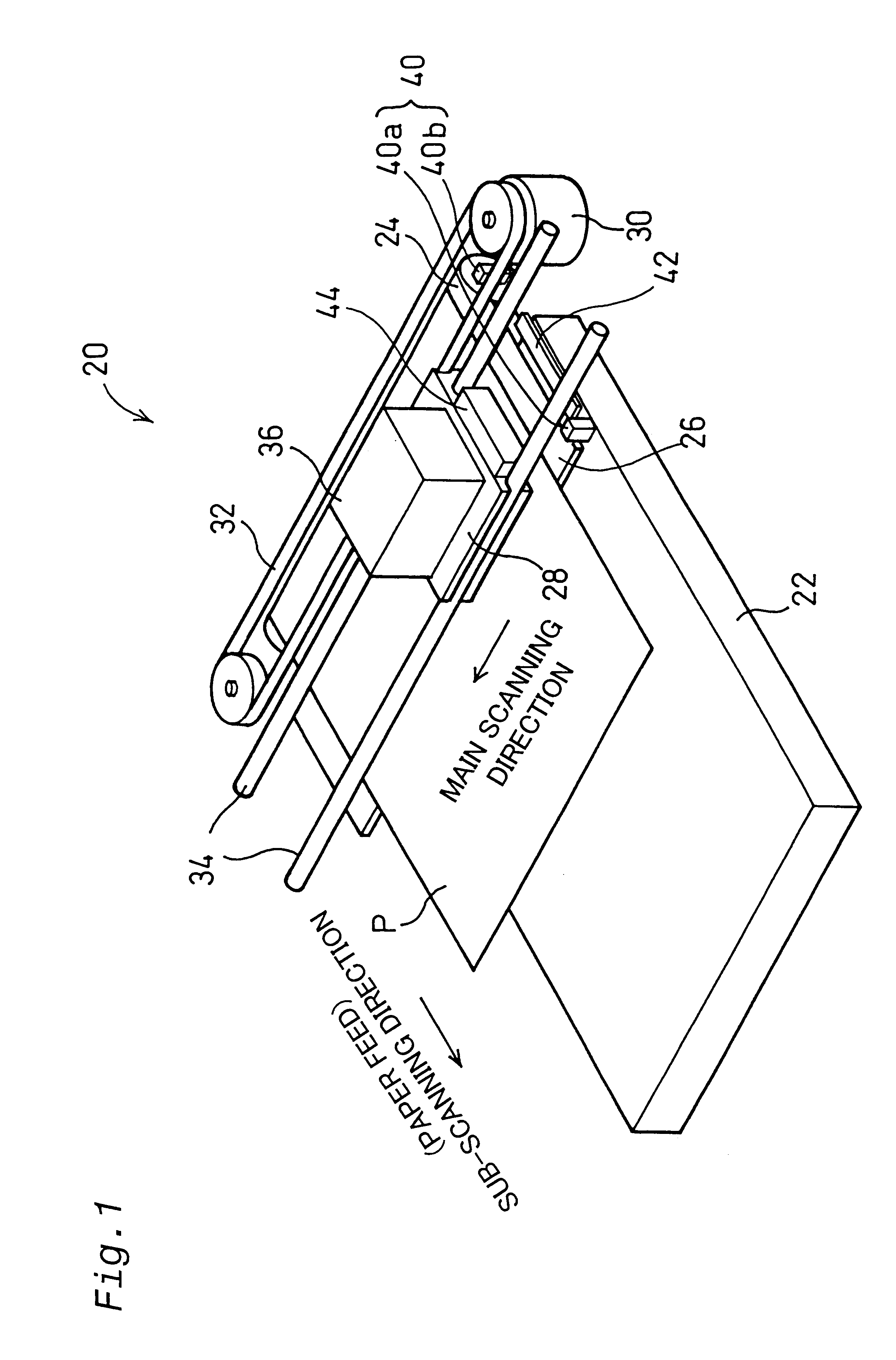Dot dropout inspection method and printer, and recording medium storing program therefore
a technology of inspection method and printer, which is applied in the direction of digital output to print units, printing, other printing apparatuses, etc., can solve the problems of affecting image quality, nozzle clogging, and inability to jetting ink droplets,
- Summary
- Abstract
- Description
- Claims
- Application Information
AI Technical Summary
Benefits of technology
Problems solved by technology
Method used
Image
Examples
Embodiment Construction
shown in FIG. 7(A), the printer 20 is assumed to be capable of using three print modes: draft (high speed, low image quality) mode M1, fine (medium speed, high image quality) mode M2, and super-fine (low speed, very high image quality) mode M2. Draft mode M1 has a print resolution of 360 dpi and a scan repetition number s (explained below) of 1. The fine mode M2 has a print resolution of 720 dpi and a scan repetition number s of 2. The super-fine mode M3 has a print resolution of 720 dpi and a scan repetition number s of 4.
FIGS. 8(A)-8(C) illustrate how individual pixels are recorded on a single raster line (main scanning line) in the three print modes M1-M3. The "scan repetition number s" means the number of main scans executed to record all pixels on a single raster line. Thus, as shown in FIG. 8(A), in draft mode M1, which has a scan repetition number s of 1, all pixels on a single raster line are recorded in a single main scan. As shown in FIG. 8(B), in fine mode M2, which has a...
PUM
 Login to View More
Login to View More Abstract
Description
Claims
Application Information
 Login to View More
Login to View More - R&D
- Intellectual Property
- Life Sciences
- Materials
- Tech Scout
- Unparalleled Data Quality
- Higher Quality Content
- 60% Fewer Hallucinations
Browse by: Latest US Patents, China's latest patents, Technical Efficacy Thesaurus, Application Domain, Technology Topic, Popular Technical Reports.
© 2025 PatSnap. All rights reserved.Legal|Privacy policy|Modern Slavery Act Transparency Statement|Sitemap|About US| Contact US: help@patsnap.com



